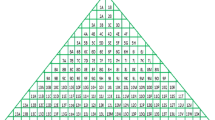Abstract
This study compared the effectiveness of a peer model and an adult model in teaching an expressive language task to four autistic boys. A BCBC design, counterbalanced across subjects, was used. After training criterion was reached, generalization of responding to an extratherapy school setting and to the home was measured. Thirteen weekly maintenance probes were conducted after training in each condition. Results indicated that all children learned through observing the peer and adult models and that few consistent differences occurred across the two conditions. The degree of generalization and maintenance of responding was consistently high in both conditions. The relation of these data to the modeling literature on autistic children and implications for developing educational programs for autistic children are discussed.
Similar content being viewed by others
References
American Psychiatric Association (1980).Diagnostic and statistical manual of mental disorders (3rd ed.). Washington, D.C.: Author.
Bandura, A. (Ed.). (1971).Psychological modeling: Conflicting theories. Chicago: Aldine-Atherton.
Bandura, A. (1977).Social learning theory. Englewood Cliffs, New Jersey: Prentice-Hall.
Charlop, M. H., Schreibman, L., & Tryon, A. S. (1983). Learning through observation: The effects of peer modeling on acquisition and generalization in autistic children.Journal of Abnormal Child Psychology, 11, 355–365.
Coleman, S. L., & Stedman, J. M. (1974). Use of a peer model in language training in an echolalic child.Journal of Behavior Therapy and Experimental Psychiatry, 5, 275–279.
Dunlap, G., & Koegel, R. L. (1980). Motivating autistic children through stimulus variation.Journal of Applied Behavior Analysis, 13, 619–627.
Egel, A. L., Richman, G. S., & Koegel, R. L. (1981). Normal peer models and autistic children's learning.Journal of Applied Behavior Analysis, 14, 3–12.
Hartmann, D. P. (1977). Considerations in the choice of interobserver reliability estimates.Journal of Applied Behavior Analysis, 10, 103–116.
Hersen, M., & Barlow, D. H. (1976).Single-case experimental designs: Strategies for studying behavior change. New York: Pergamon Press.
Koegel, R. L., Egel, A. L., & Dunlap, G. (1980). Learning characteristics of autistic children. In W. S. Sailor, B. Wilcox, & J. L. Brown (Eds.),Methods of instruction for severely handicapped students (pp. 259–301). Baltimore: Brooks.
Lovaas, O. I., Freitas, L., Nelson, K., & Whalen, C. (1967). The establishment of imitation and its use for the development of complex behavior in schizophrenic children.Behaviour Research and Therapy, 5, 171–181.
McCarthy, D. (1972).McCarthy scales of children's abilities. New York: Psychological Corporation.
Mischel, W. (1976).Introduction to personality (2nd ed.). New York: Holt, Rinehart & Winston.
Riguet, C. B., Taylor, N. D., Benaroya, S., & Klein, L. S. (1981). Symbolic play in autistic, Down's, and normal children of equivalent mental age.Journal of Autism and Developmental Disorders, 11, 439–448.
Varni, J. W., Lovaas, O. I., Koegel, R. L., & Everett, N. L. (1979). An analysis of observational learning in autistic and normal children.Journal of Abnormal Child Psychology, 1, 31–43.
Author information
Authors and Affiliations
Additional information
This article is based on the first author's master's thesis, which was conducted under the supervision of the second author at Arizona State University. The authors wish to acknowledge the assistance of Jayne Burgess, Jill Richards, and Sean McDevitt in conducting this study, as well as the Devereux Foundation, the children, and their parents. Appreciation is also extended to George Chartier, Nancy Eisenberg, and Judy Sarrett for their assistance in the preparation of this article.
Rights and permissions
About this article
Cite this article
Ihrig, K., Wolchik, S.A. Peer versus adult models and autistic children's learning: Acquisition, generalization, and maintenance. J Autism Dev Disord 18, 67–79 (1988). https://doi.org/10.1007/BF02211819
Issue Date:
DOI: https://doi.org/10.1007/BF02211819




